Xi’An is a city of the unexpected. Nothing was quite how we imagined it would be. The historic city still has its ancient walls intact, The Terracotta Warriors seemed decimated, the Muslim Quarter complete with mosque was a complete surprise, we hadn’t expected to find pandas nearby and the smog was of epic proportions.
After Beijing, we didn’t think the pollution could get worse but Xi’An’s choking atmosphere surpassed the capital by some margin. It was like wading through a dust cloud: we could feel it in our eyes, we could taste it in our mouths and it settled everywhere upon us. Even rain showers could not clear it, and, after a shower, cars were streaked with a grey paste and the bright red petunias that they place liberally around the city monuments were dulled and beaten into a drab forlornness.
But it did not affect the bustle and vivacity of the people that thronged the streets on foot, on electric two wheelers or in their expensive cars. I read a report that said that the combined sales of BMW and Mercedes for the first three months of this year amounted to 60,000 vehicles making China their third biggest market. Not bad for a country with a per capita GDP of us$6,000! The electric scooters and bicycles have largely replaced the traditional push bike: they are ridden everywhere, particularly on pavements (not that there is much in the way of pavement here – the roads take all the space) and they are like silent death creeping up behind us. Walking around becomes more like jumping about as we strive to avoid becoming a traffic accident statistic. Frankly we are no less safe in the middle of the road.
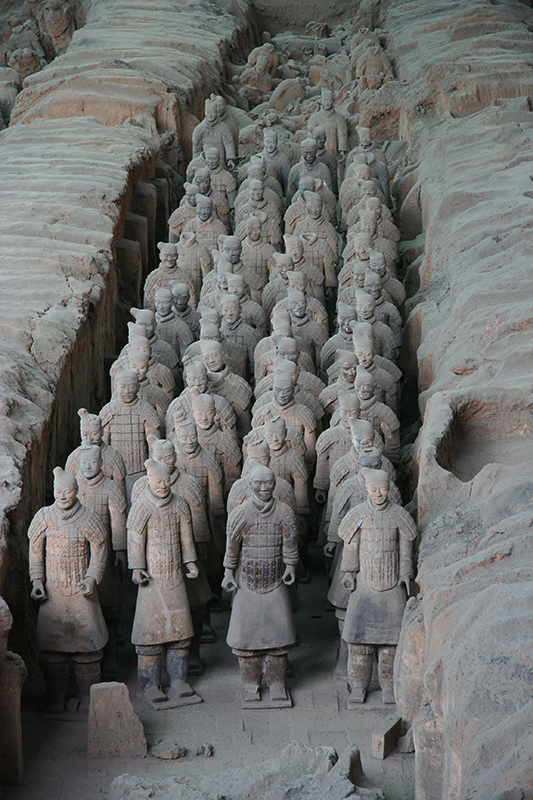 However, Xi’An is really about the Terracotta Warriors and they are the real draw of the city. They were constructed to stand guard around the final resting place of Emperor Qin Shi Huang who was the first ruler to unify China in 219 BC. Either Qin was terrified of the spirits that awaited him in the afterlife or he expected to continue to rule in death as he had in life. Some 6,000 people were involved in building the tomb and the army and, it is said, that all were killed when the work was completed and buried with their king. The bodies of the warriors were made in simple moulds but the heads were individually sculpted – it is claimed that no two are the same – and many of them are not actually fixed to the body. No one knows how many soldiers were created (so far around 8,000 have been discovered) because archaeologists are convinced there are many more pits to be discovered other than the 3 unearthed so far.
However, Xi’An is really about the Terracotta Warriors and they are the real draw of the city. They were constructed to stand guard around the final resting place of Emperor Qin Shi Huang who was the first ruler to unify China in 219 BC. Either Qin was terrified of the spirits that awaited him in the afterlife or he expected to continue to rule in death as he had in life. Some 6,000 people were involved in building the tomb and the army and, it is said, that all were killed when the work was completed and buried with their king. The bodies of the warriors were made in simple moulds but the heads were individually sculpted – it is claimed that no two are the same – and many of them are not actually fixed to the body. No one knows how many soldiers were created (so far around 8,000 have been discovered) because archaeologists are convinced there are many more pits to be discovered other than the 3 unearthed so far.
It was quite by accident that they were found at all. In 1974, peasants drilling a well uncovered a vault that eventually yielded thousands of terracotta soldiers and horses in battle formation. The farmer who had the good fortune to come across the find can now be found, sitting behind a desk in the souvenir shop, autographing tourist guides for the appropriate consideration.
The surprise of our visit was how few of the warriors were on display. We had expected to see thousands of them, several ranks deep and all in excellent condition. The reality was that the vast majority of the army is still lies buried under the roofs that were built to house them. Many of these roofs have collapsed breaking the soldiers beneath, and giving archaeologists a lifetime’s work of reconstruction. Two of the pits had a handful of warriors and the main pit, which is said to house over 6,000 warriors, had maybe a couple of hundred on display. Massed ranks it certainly wasn’t.
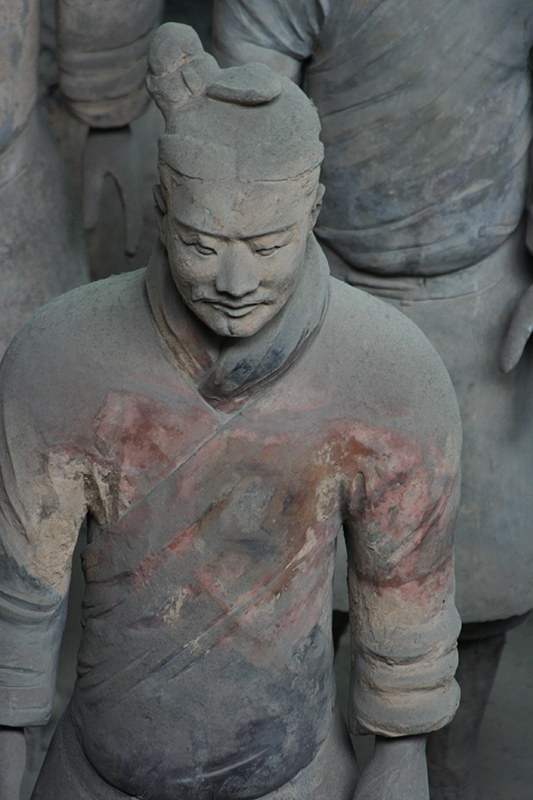 The disappointment that there were not more to see was balanced by the wonderful artistry of those figures that could be viewed. The attention to detail is extraordinary. Amongst the archers, for example, different shoes denoted those that were married from those that were not, toe ends denoted rank, apprentices had no armour, some were fat, some thin and all had different facial features and hairstyles. This was not simply some mass-produced product: every piece is individual and unique. With no effort being spared to create every single member of the army it was no surprise that even the horses were different one to another. Apparently, it took 38 years to complete and that is no surprise.
The disappointment that there were not more to see was balanced by the wonderful artistry of those figures that could be viewed. The attention to detail is extraordinary. Amongst the archers, for example, different shoes denoted those that were married from those that were not, toe ends denoted rank, apprentices had no armour, some were fat, some thin and all had different facial features and hairstyles. This was not simply some mass-produced product: every piece is individual and unique. With no effort being spared to create every single member of the army it was no surprise that even the horses were different one to another. Apparently, it took 38 years to complete and that is no surprise.
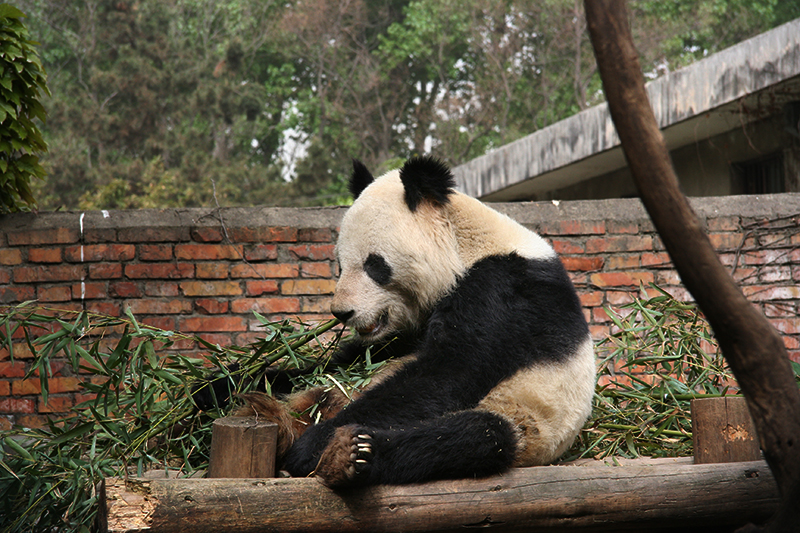 Just outside Xi’An is a wildlife sanctuary where they specialise in helping injured or malnourished pandas to recover before, supposedly, releasing them back into their natural environment. They also have a breeding programme aimed at slowly increasing the number of pandas, an endangered species, using artificial insemination. Females are ‘in season’ for two days each year and, if this time is missed, or if they do not conceive for any reason, a year has to pass before another opportunity arises. Incredibly, when a youngster is born it weighs 100gm (0.22lbs), surprising for an animal that grows up to 200Kg as an adult.
Just outside Xi’An is a wildlife sanctuary where they specialise in helping injured or malnourished pandas to recover before, supposedly, releasing them back into their natural environment. They also have a breeding programme aimed at slowly increasing the number of pandas, an endangered species, using artificial insemination. Females are ‘in season’ for two days each year and, if this time is missed, or if they do not conceive for any reason, a year has to pass before another opportunity arises. Incredibly, when a youngster is born it weighs 100gm (0.22lbs), surprising for an animal that grows up to 200Kg as an adult.
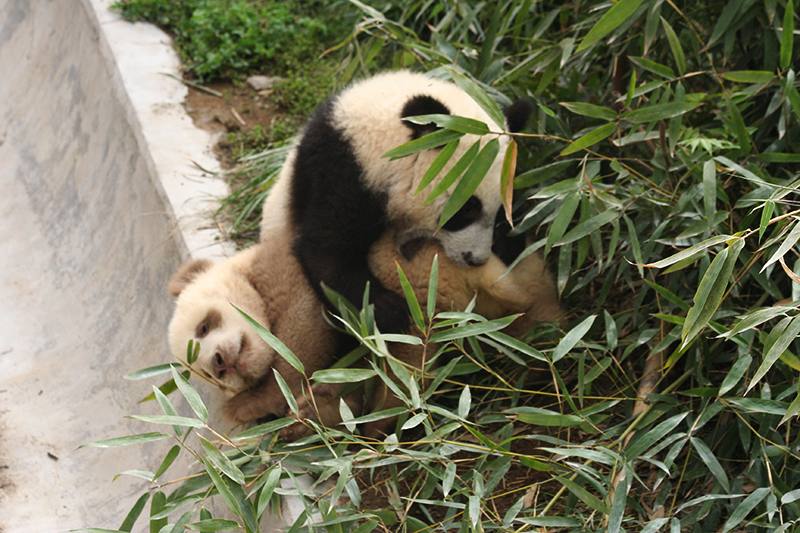 We were lucky enough to see five babies all playing together in one large open enclosure. They weren’t like their adults, lethargic and slow moving, they were rushing about, fighting, pushing, playing tag and learning to climb. The rough and tumble went on for longer than we had time to watch. Surprisingly, one of the youngsters was brown and white and, we were told, was the only brown and white Panda in existence.
We were lucky enough to see five babies all playing together in one large open enclosure. They weren’t like their adults, lethargic and slow moving, they were rushing about, fighting, pushing, playing tag and learning to climb. The rough and tumble went on for longer than we had time to watch. Surprisingly, one of the youngsters was brown and white and, we were told, was the only brown and white Panda in existence.
The adult Pandas were housed singly in their large areas, giving them a lonely, unsocial existence. They seemed to be quite content to laze around eating copious quantities of bamboo (up to 30Kg a day) or sleeping.
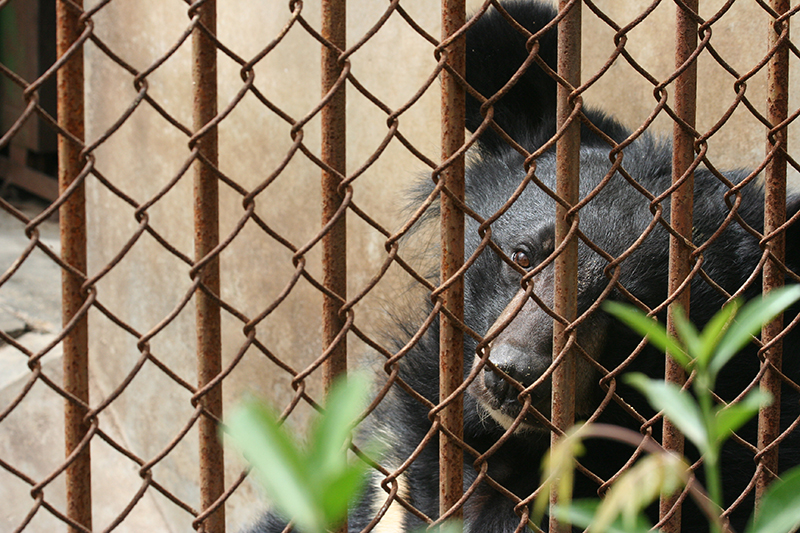 There were quite a number of other animals in other areas the sanctuary: endangered golden monkeys, red pandas (more like a raccoon in size and shape), black bears, snow leopard, endangered crested ibis, cinerous vultures and common buzzards. They were held in tiny cages in the worst zoo style imaginable. Plainly, these animals didn’t really matter and the larger creatures looked sorrowful, listless and vacant. It was depressing.
There were quite a number of other animals in other areas the sanctuary: endangered golden monkeys, red pandas (more like a raccoon in size and shape), black bears, snow leopard, endangered crested ibis, cinerous vultures and common buzzards. They were held in tiny cages in the worst zoo style imaginable. Plainly, these animals didn’t really matter and the larger creatures looked sorrowful, listless and vacant. It was depressing.
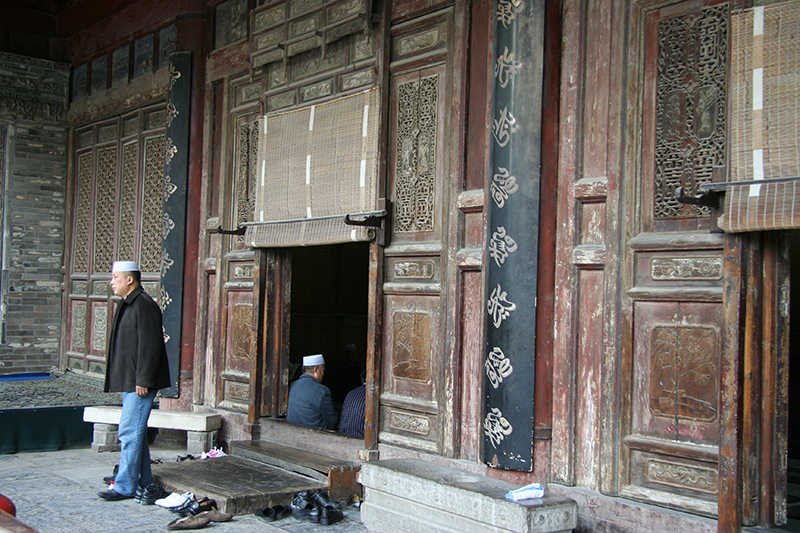 However, back in town, another surprise awaited: The Great Mosque. Sitting in the middle of the Muslim quarter, faces west (towards Mecca) instead of the usual South or East. It dates back to 742 AD, houses a great prayer room that can hold 1,000 worshippers and which has the entire Koran carved into the wooden walls, it is a sanctuary of tranquility in the centre of a bustling, chaotic city. Its minaret is so small that it is dwarfed by the surrounding buildings, so the call to prayer is done by megaphone from the base. So Chinese are all the buildings that if everyone inside were removed, we would not be able to tell it was a mosque. We would mistake it for yet another temple (albeit one without Buddha statues).
However, back in town, another surprise awaited: The Great Mosque. Sitting in the middle of the Muslim quarter, faces west (towards Mecca) instead of the usual South or East. It dates back to 742 AD, houses a great prayer room that can hold 1,000 worshippers and which has the entire Koran carved into the wooden walls, it is a sanctuary of tranquility in the centre of a bustling, chaotic city. Its minaret is so small that it is dwarfed by the surrounding buildings, so the call to prayer is done by megaphone from the base. So Chinese are all the buildings that if everyone inside were removed, we would not be able to tell it was a mosque. We would mistake it for yet another temple (albeit one without Buddha statues).
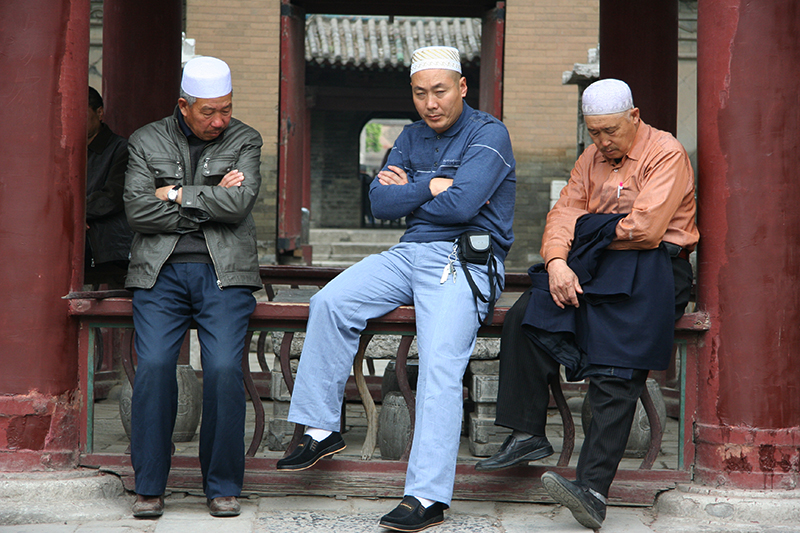 The area surrounding the Great Mosque is full of little alleyways with stalls and small shops selling tourist tat or food. It was like a North African souk only populated by Chinamen (Hui Community = Chinese Muslims). It demonstrates how far the African traders travelled along the Silk Route in years gone by and, it is surprising, that the Muslim faith has endured for so long as an alien religion so far from its heartland.
The area surrounding the Great Mosque is full of little alleyways with stalls and small shops selling tourist tat or food. It was like a North African souk only populated by Chinamen (Hui Community = Chinese Muslims). It demonstrates how far the African traders travelled along the Silk Route in years gone by and, it is surprising, that the Muslim faith has endured for so long as an alien religion so far from its heartland.
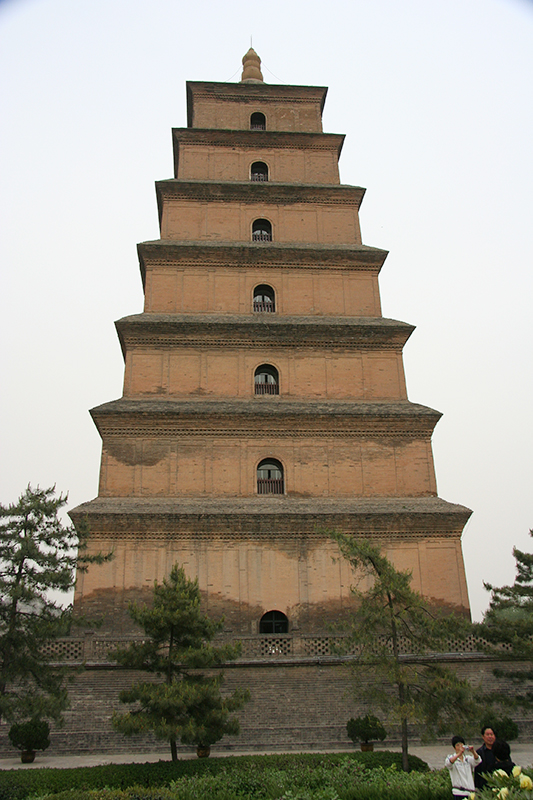 In contrast, the Great Goose Pagoda is right in the centre of its congregation. Built in 652 AD, to house writings brought back by a monk named Xuan Zang who made an epic 17 year round trip to India along the Silk Road, it has a tower (the Pagoda) which must be ten times higher than the minaret of the Great Mosque. The whole temple has been rebuilt and reconstructed in recent years as evidenced by black and white photographs along some of the inner walls that depict a run down, ramshackle set of buildings overgrown by grasses, weeds and bushes. In the main pavilion sat a large freshly painted and brightly lit Buddha without a hint of ‘protective’ dust that covers every other idol we’ve seen.
In contrast, the Great Goose Pagoda is right in the centre of its congregation. Built in 652 AD, to house writings brought back by a monk named Xuan Zang who made an epic 17 year round trip to India along the Silk Road, it has a tower (the Pagoda) which must be ten times higher than the minaret of the Great Mosque. The whole temple has been rebuilt and reconstructed in recent years as evidenced by black and white photographs along some of the inner walls that depict a run down, ramshackle set of buildings overgrown by grasses, weeds and bushes. In the main pavilion sat a large freshly painted and brightly lit Buddha without a hint of ‘protective’ dust that covers every other idol we’ve seen.
However, the Mosque was inside and protected by the old city walls. They, like the Goose Pagoda, have been renovated sympathetically to the original style and construction. They are certainly sturdy and thick being around 10 metres deep at their base, 12 metres high and a good 7 metres wide at the top. Watch towers were set every 120 metres (60 metres being the effective distance of an arrow) and each point of the compass had a great gate complete with drawbridge across the moat.
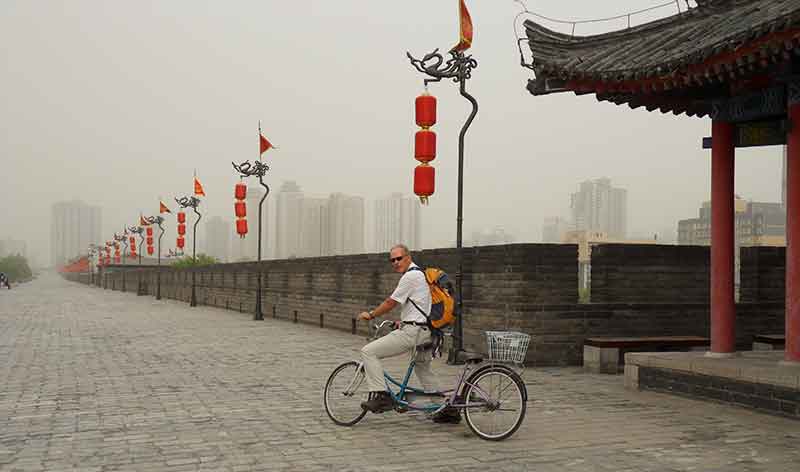 Naturally, we took a tandem push bike for a ride around the 14 km perimeter. I climbed on the back of the bike to give Debbie a better view and to fulfill the male role of engine. But the seat, which was unajustable, was set so low that it was impossible for me to peddle. My knees would have had to move higher than my ears, a feat that might have been achievable a few decades ago. So we had to swop round. I decided where we were going and Debbie had to push. An excellent arrangement. As expected, the ride revealed some of the less pleasant areas of the city as well as some of the ultra modern tall towers in the more affluent parts.
Naturally, we took a tandem push bike for a ride around the 14 km perimeter. I climbed on the back of the bike to give Debbie a better view and to fulfill the male role of engine. But the seat, which was unajustable, was set so low that it was impossible for me to peddle. My knees would have had to move higher than my ears, a feat that might have been achievable a few decades ago. So we had to swop round. I decided where we were going and Debbie had to push. An excellent arrangement. As expected, the ride revealed some of the less pleasant areas of the city as well as some of the ultra modern tall towers in the more affluent parts.
The smog put paid to any far reaching views and we are genuinely unable to say whether Xi’An sits on a plain, or at the bottom of great mountains or is on Mars. We had also picked up colds and sore throats, presumably from a mixture of germs and acidity trapped in the aerial soup. The enveloping fug was sufficiently suffocating that, it can be no surprise, we were very pleased to move on.

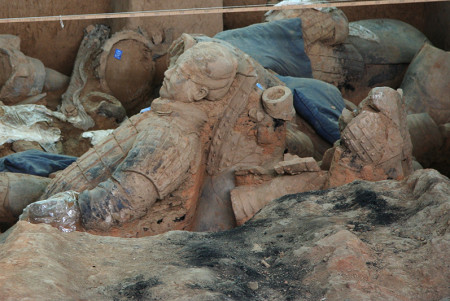
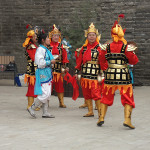
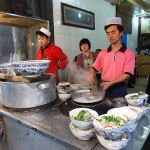
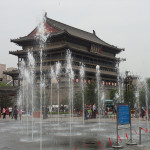
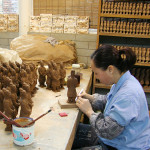
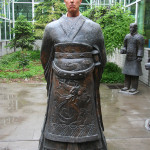
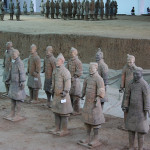
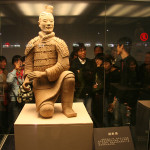
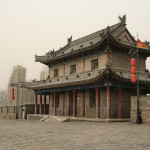
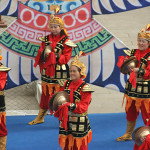
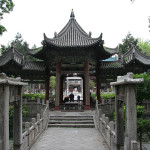
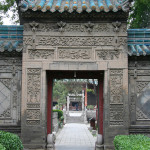
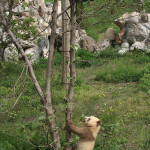

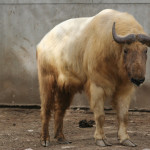
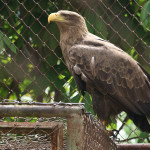
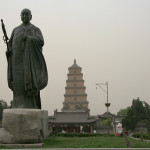
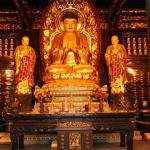
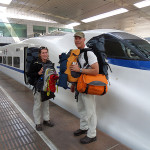
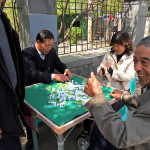
No comments yet.